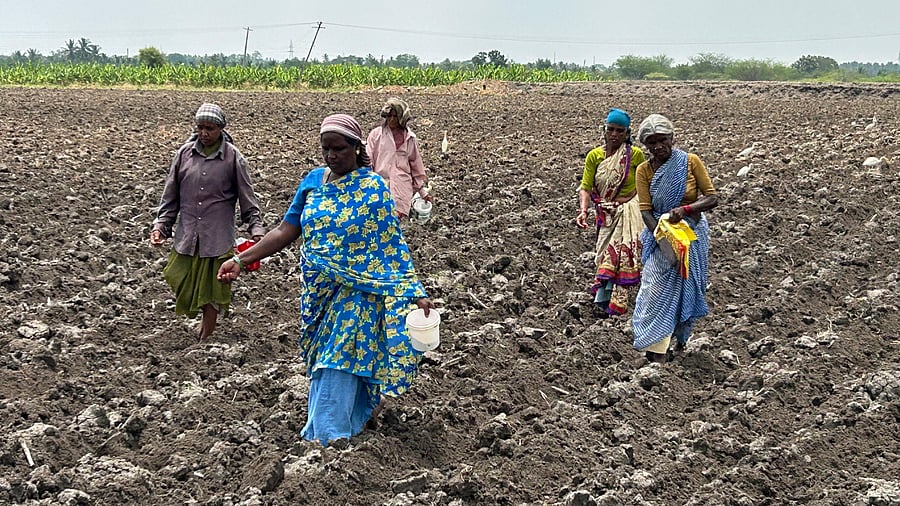
With the early onset of monsoon, farming acitvity has gained momentum in the state. Karnataka has set for itself a target of cultivating crops on 82.5 lakh ha of land in the kharif season between June and September.
Credit: DH photo
Hubballi: The copious summer showers and early setting of monsoon has kick-started the agricultural activities in the state. Compared to last May, the state is witnessing a slight increase in the sowing.
With experts suggesting early sowing is better, even if the monsoon weakens in the coming days, officials at Agriculture Department say they are prepared for expected increase in the demand for seeds and fertilizers.
Unlike Maharashtra government, which has asked its farmers not to rush to sowing as monsoon is expected to weaken in the coming days, Karnataka hasn’t issued any such warnings.
Scientists at India Meteorological Department, Bengaluru, and Karnataka State Natural Disaster Monitoring Centre of Revenue Department have suggested that the state could witness a break in monsoon for 6 to 10 days by the first week of June.
In a normal monsoon year, by May-end farmers would have completed sowing food grains, oil seeds and commercial crops on 2.81 lakh hectares. However, in the third week of May itself the farmers across Karnataka have completed sowing on over 2.86 lakh ha land. The numbers are expected to go further up, thanks to excessive pre-monsoon
showers.
Karnataka has set itself a target of cultivating crops on 82.50 lakh ha of land in the kharif season that spans between June and September. And if the rains hold good and reservoirs fill to satisfactory level, the state wishes to cultivate rabi crops (October to December) on 25.50 lakh ha.
Cereals are expected to be cultivated on 35.74 lakh ha, whereas pulses on 23.03 lakh ha.
Oil seeds will be cultivated on 5.62 lakh ha and commercial crops such as cotton (7.90 lakh ha) and sugarcane (6.51 lakh ha) will be cultivated on 15.12 lakh ha during the kharif season.
Tur cultivation area is expected to increase substantially this kharif season as the department has set a target of cultivating one of the staple food grains on nearly 16.80 lakh ha, nearly 1.80 lakh ha higher than last year. Paddy cultivation is expected to remain more or less the same as last year’s 10.60 lakh ha.
“This is an appropriate time for cultivation of green gram, black gram and cowpea. For disease-free growth of these crops early sowing is good,” says B D Biradar Director of Research, University of Agriculture Sciences (UAS), Dharwad. He says the early setting of monsoon and subsequent sowing will give farmers a chance to go for a second crop such as cotton, groundnut and others.
N Ravi, a cowpea farmer in Mandya’s Alakere, says they had received inputs from the agriculture department regarding early and above normal monsoon; so, we had prepared our fields by April-end itself. “The rain giving a break will help farmers as the soil would have held a good level of moisture that will help in better yield,” he says.
Speaking to DH, Agriculture Department Director G T Putra says the state has no dearth of seeds and fertilizers.
Quote -
“This is an appropriate time for cultivation of green gram black gram and cowpea. For disease-free growth of these crops early sowing is good.
B D Biradar
Director of Research
UAS Dharwad